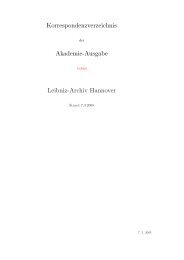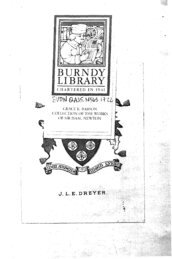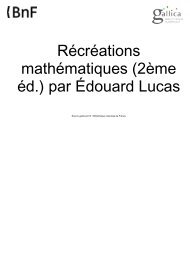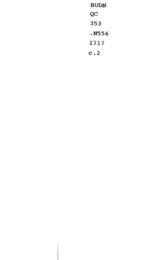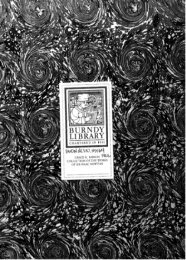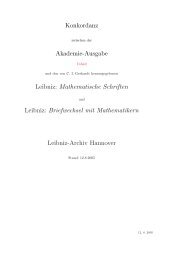The Second Book of Mathematical Puzzles and Diversions
The Second Book of Mathematical Puzzles and Diversions
The Second Book of Mathematical Puzzles and Diversions
You also want an ePaper? Increase the reach of your titles
YUMPU automatically turns print PDFs into web optimized ePapers that Google loves.
Digital Roots 49<br />
divided by 9. This is not hard to prove, <strong>and</strong> perhaps an in-<br />
formal statement <strong>of</strong> a pro<strong>of</strong> will interest some readers.<br />
Consider a four-digit number, say 4,135. This can be writ-<br />
ten as sums <strong>of</strong> powers <strong>of</strong> 10 :<br />
If 1 is subtracted from each power <strong>of</strong> 10, we can write<br />
the same number like this :<br />
(4 x 999) + (1 x 99) + (3 x 9) + (5 x 0) + 4 + 1 + 3 + 5<br />
<strong>The</strong> expressions inside the. parentheses are all multiples<br />
<strong>of</strong> 9. After casting them out, we are left with 4 + 1 + 3 + 5,<br />
the digits <strong>of</strong> the original number.<br />
In general, a number written with the digits abed can<br />
be written :<br />
(aX999) + (bX99) + (cX9) + (dXO) +a+b+c+d<br />
<strong>The</strong>refore a + b + c + d must be a remainder after cer-<br />
tain multiples <strong>of</strong> 9 are cast out. This remainder <strong>of</strong> course<br />
may be a number <strong>of</strong> more than one digit. If so, the same<br />
procedure will show that the sum <strong>of</strong> its digits will give<br />
another remainder after other multiples <strong>of</strong> 9 are cast out,<br />
<strong>and</strong> we can continue until only one digit, the digital root,<br />
remains. Such a procedure can be applied to any number,<br />
no matter how large. <strong>The</strong> digital root, therefore, is the num-<br />
ber that remains after the maximum number <strong>of</strong> 9's have<br />
been cast out; that is, after the number is divided by 9.<br />
Digital roots are <strong>of</strong>ten useful as negative checks in deter-<br />
mining whether a very large number is a perfect square or<br />
cube. All square numbers have digital roots <strong>of</strong> 1, 4, 7 or 9,<br />
<strong>and</strong> the last digit <strong>of</strong> the number cannot be 2, 3, 7 or 8. A<br />
cube may end with any digit, but its digital root must be 1,<br />
8 or 9. Most curiously <strong>of</strong> all, an even perfect number (<strong>and</strong><br />
so far no odd perfect number has been found) must end in<br />
6 or 28 <strong>and</strong>, with the exception <strong>of</strong> 6, the smallest perfect<br />
number, have a digital root <strong>of</strong> 1.




